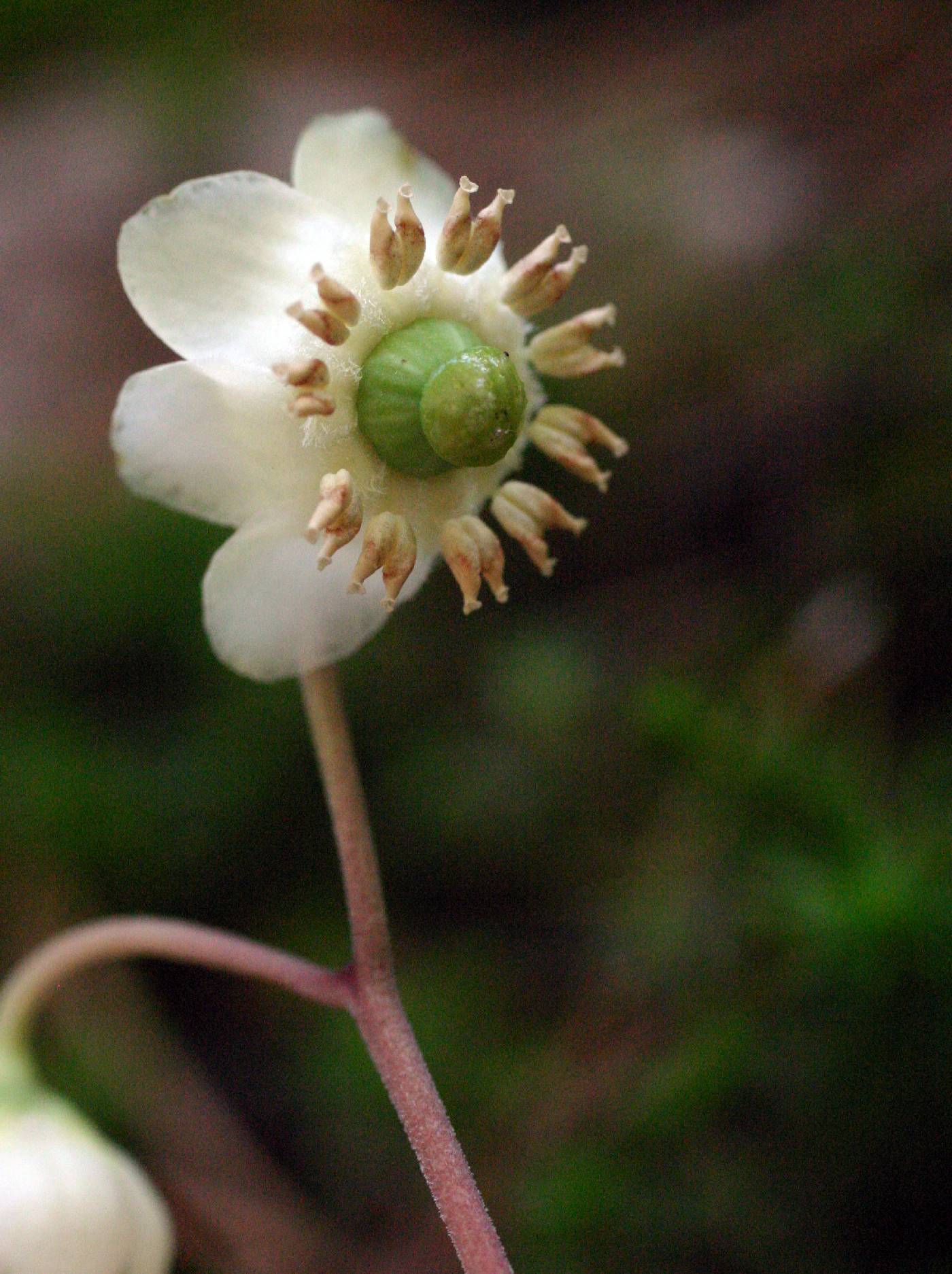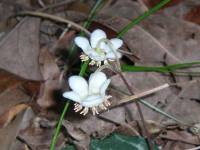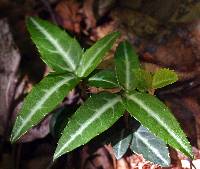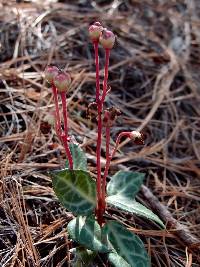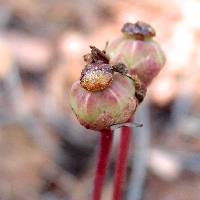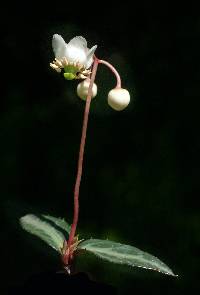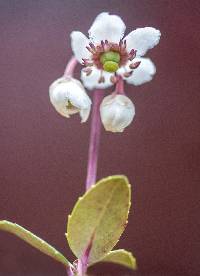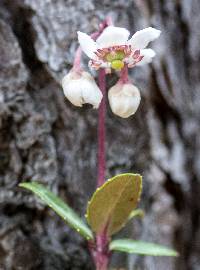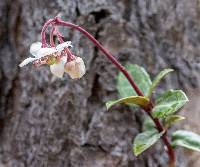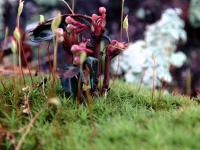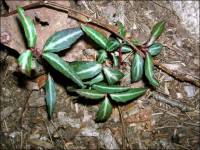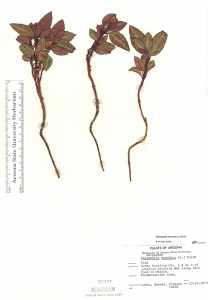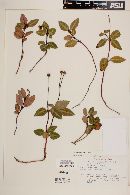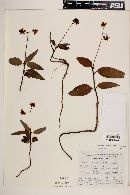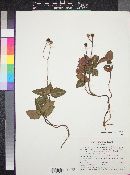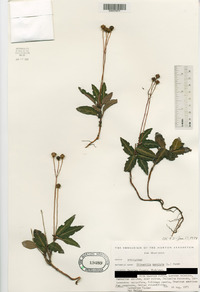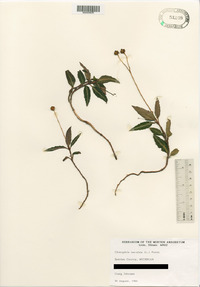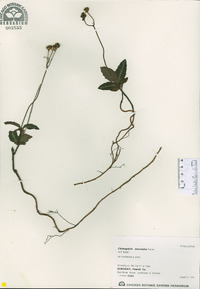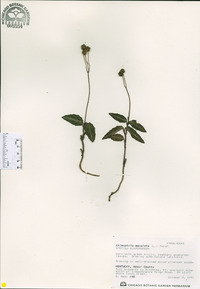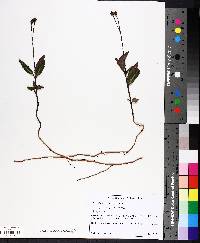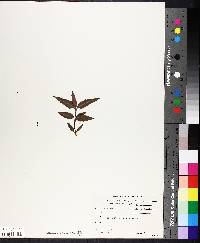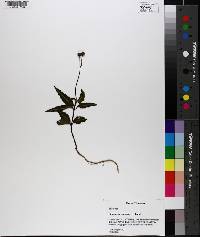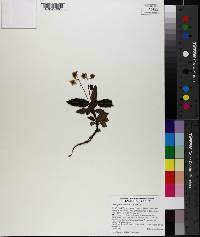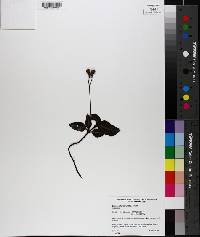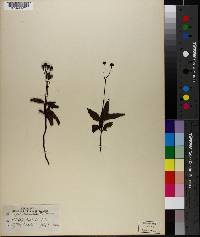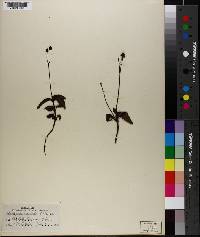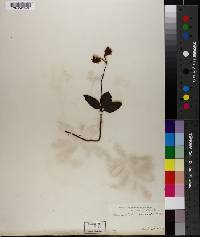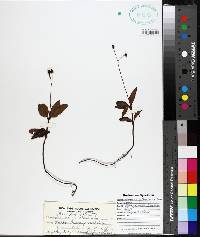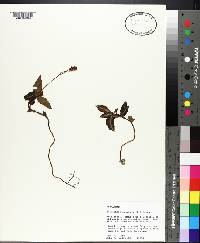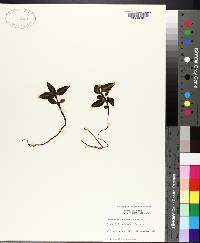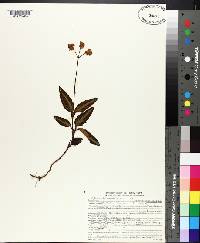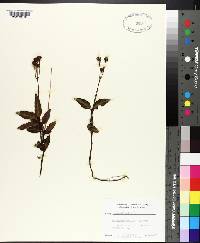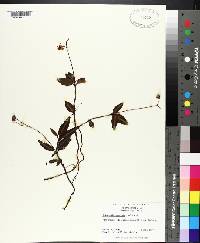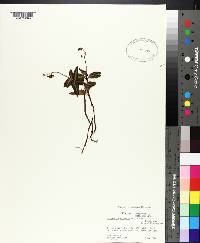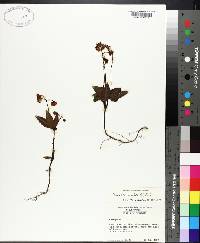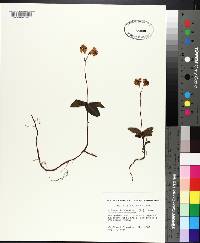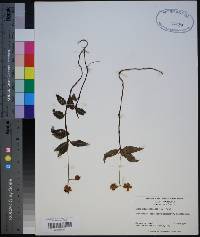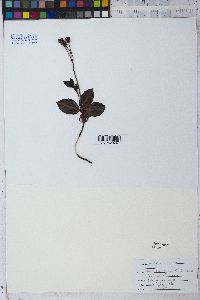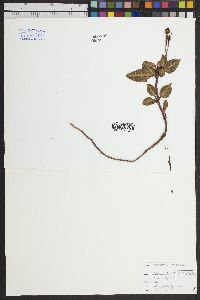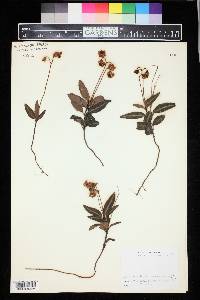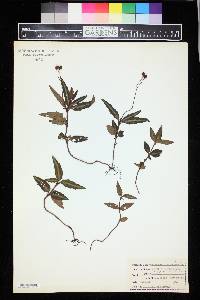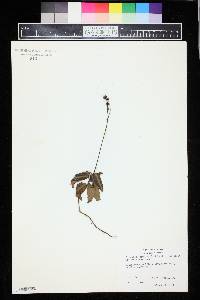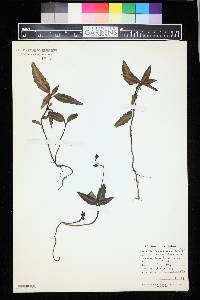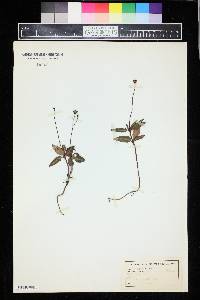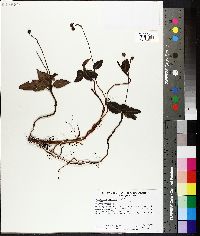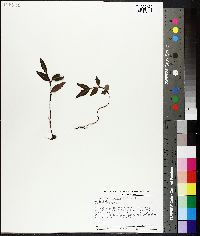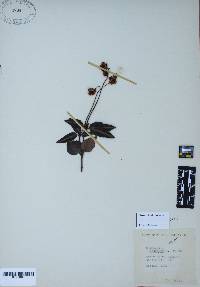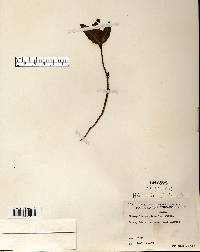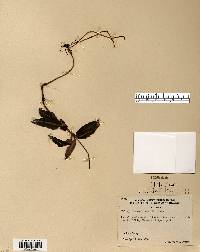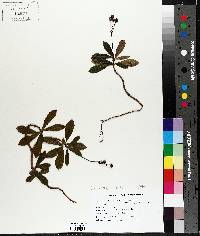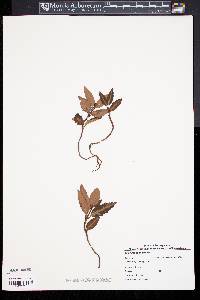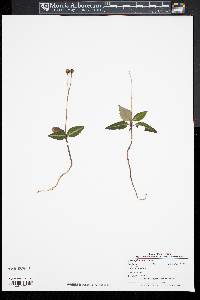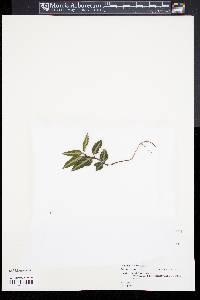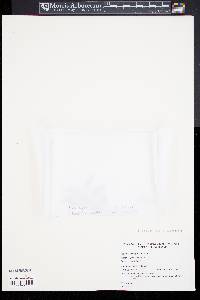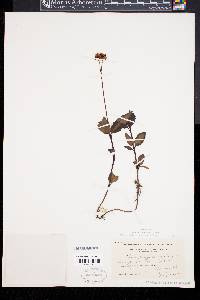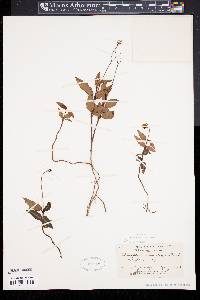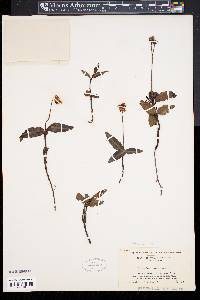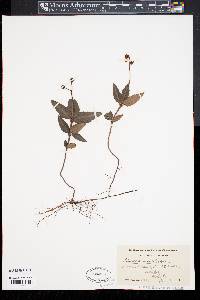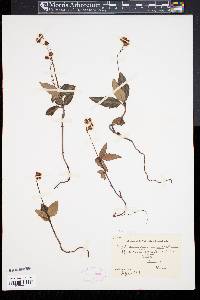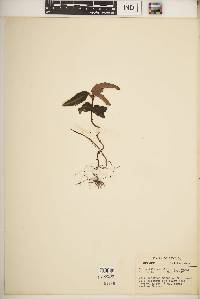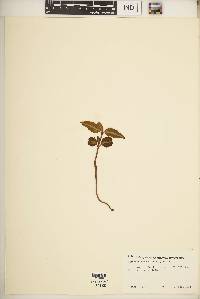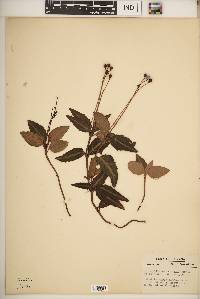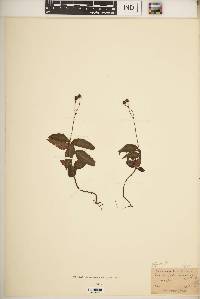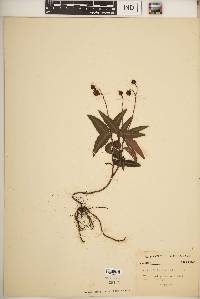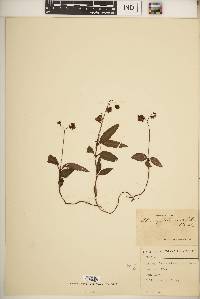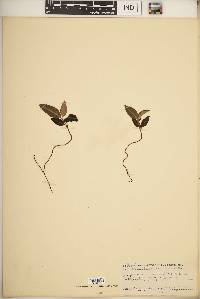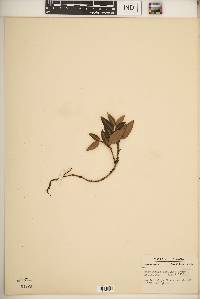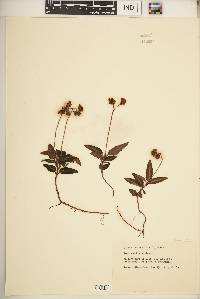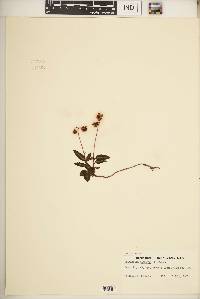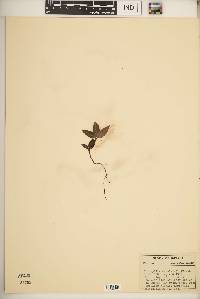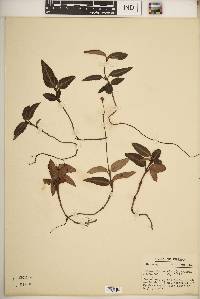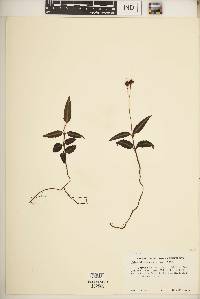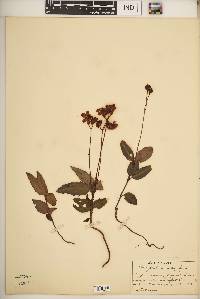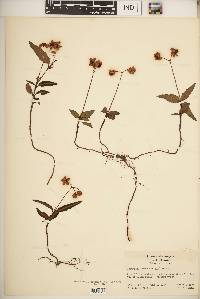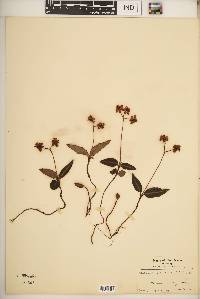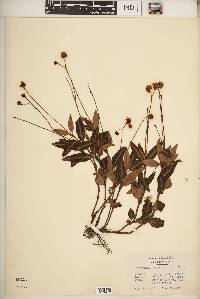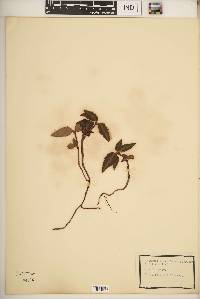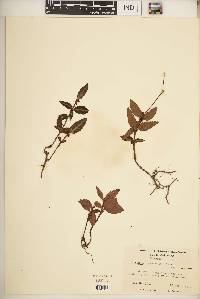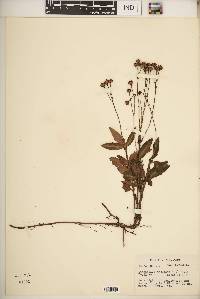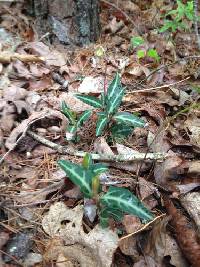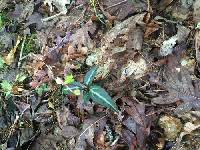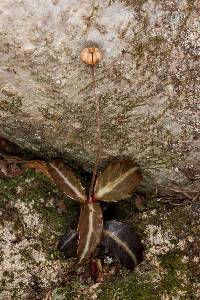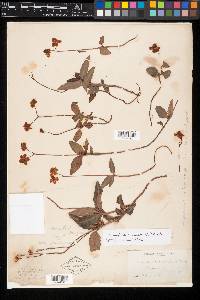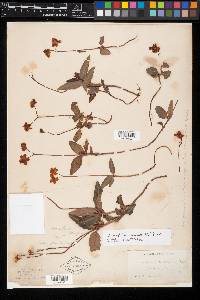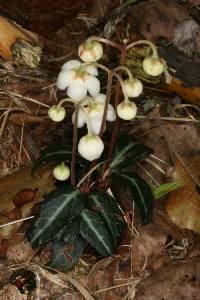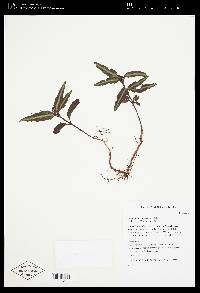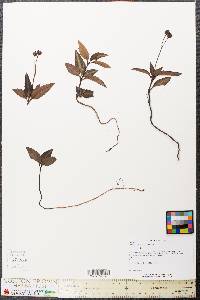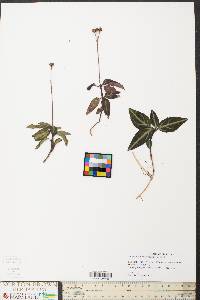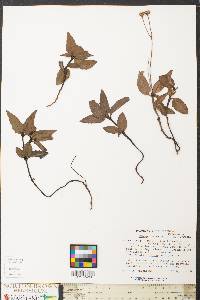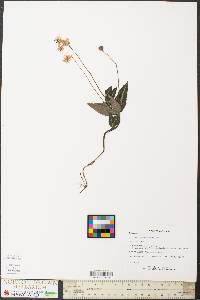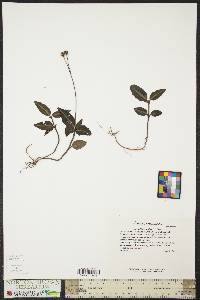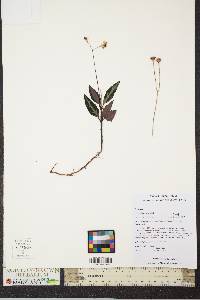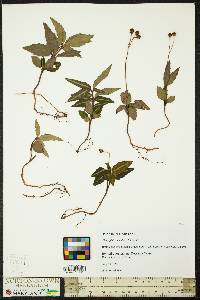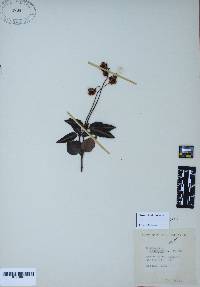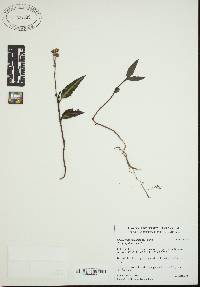Chimaphila maculata
|
|
|
|
Family: Ericaceae
striped prince's pine, more...Striped Prince's-Pine
[Chimaphila dasystemma, moreChimaphila guatemalensis Rydb., Chimaphila maculata var. dasystemma (Torr.) Kearney & Peebles, Chimaphila maculata var. maculata (L.) Pursh] |
Plants rhizomatous, 1-5.3 dm. Leaves: petiole 3-13 mm, terete or channeled adaxially, glabrous; blade maculate, dull and light green abaxially, shiny and green to dark green with white achlorophyllous tissue bordering larger veins adaxially, lanceolate or ovate-lanceolate to oblong-lanceolate or ovate, 20-100 × 8-31 mm, base rounded to obtuse or acute, margins coarsely serrate, apex acute to acuminate. Inflorescences (1-)2-5-flowered; peduncle 1(-2) per stem, 4-19 cm, papillose to hispidulous; inflorescence bracts acicular to linear-lanceolate, free portions shorter than pedicels from which they arise, 4-6 × 0.4-0.6 mm, membranous, margins entire. Pedicels (4-)8-25 mm. Flowers: calyx lobes spreading or reflexed in fruit, entirely greenish or margins whitish green, broadly ovate, 1.4-4.1 × 1.3-4.5 mm, margins erose-denticulate, apex rounded to obtuse; petals white or pink, often tinged violet, orbiculate, 6-12 × 4.5-8 mm, margins fimbriate to erose-denticulate; stamens 6-8 mm; filament base 1.2-1.6 mm wide, dilated basal portion densely villous; anthers 2-4 mm, thecae white to tan or pinkish, tubules tan to pinkish brown, 0.8-1.1 mm, abruptly narrowed from thecae, lateral walls not touching, pores 0.3-0.5 × 0.3-0.5 mm; ovary papillose in lines; style 0.5-1 mm; stigma 2-3.5 mm wide. Capsules depressed-globose, 5-10 × 5-10 mm. 2n = 26. Flowering May-Jul(-Aug). Coniferous, mixed, and deciduous forests, xeric sand communities; 0-900 m; Ont., Que.; Ala., Ariz., Conn., Del., D.C., Fla., Ga., Ill., Ind., Ky., Maine, Md., Mass., Mich., Miss., N.H., N.J., N.Y., N.C., Ohio, Pa., R.I., S.C., Tenn., Vt., Va., W.Va.; Mexico; Central America (Costa Rica, El Salvador, Guatemala, Honduras, Nicaragua, Panama); introduced in Europe (France). Chimaphila maculata exhibits considerable morphologic variation, which does not appear to be correlated with geography.
FNA 2009, Kearney and Peebles 1969 Duration: Perennial Nativity: Native Lifeform: Subshrub General: Rhizomatous evergreen subshrub, generally low-growing to 30 cm, with woody branches arising from the base, older plants bearing scarred nodes, stems reddish-brown. Leaves: Variegated evergreen leaves, dark green with a white or light green stripe down the middle, reddish-brown beneath, ovate to lanceolate with widely toothed margins and acutely pointed tips. Flowers: White (sometimes greenish-white, pink, or light purple) radial and rounded, often nodding, having 5 rounded petals, petals minutely fringed, sometimes deflexed, anthers having 2 prong-like portions, superior green ovary, having papillose lines. Fruits: Depressed-globose capsules, 5-10 mm diameter. Ecology: Found among rocks in mixed, deciduous, and coniferous forests, and in xeric sand communities, from 6,500-8,000 ft (1981-2438 m); flowers May-July. Notes: This charming plant is easily recognizable by it striped leaves and pretty white flowers. Look for it near the forest floor when not in flower, as most of its height comes from its flowering stalk. Ethnobotany: This plant was used as a poultice for pain and rheumatism, used as a wash for cancer, ulcers, eczema and ringworm, and taken as an infusion to treat colds and fevers, urinary problems, and was used as an emetic. Synonyms: Chimaphila maculata var. dasystemma Editor: LCrumbacher, 2011 Flowering branches 1-2 dm tall; lvs 2-7 cm, lanceolate, striped with white along the midvein and to a lesser extent along the primary lateral veins, remotely and sharply toothed, acute to rounded at base, short-petioled; fls (1)2-5 and umbellate, 12-18 mm wide, dilated part of the filaments villous. Dry woods, especially in sandy soil; Me. and N.H. to Mich., s. to S.C., Ga. and Ala. June-Aug., after no. 1 [Chimaphila umbellata (L.) Barton]. Gleason, Henry A. & Cronquist, Arthur J. 1991. Manual of vascular plants of northeastern United States and adjacent Canada. lxxv + 910 pp. ©The New York Botanical Garden. All rights reserved. Used by permission. From Flora of Indiana (1940) by Charles C. Deam An infrequent to rare plant of high ground, associated with either black oak or beech. There is a specimen in the herbarium of the University of Illinois collected in 1883 by E. J. Hill in a pine woods near Edgemoor (now in west Gary). |
|
|
|

